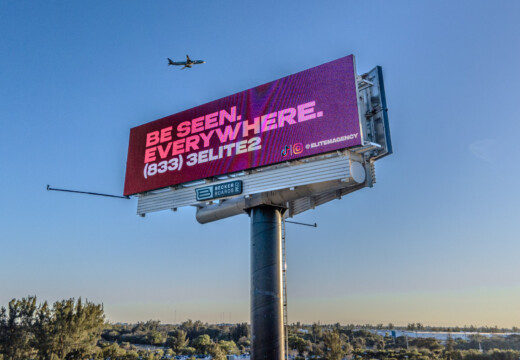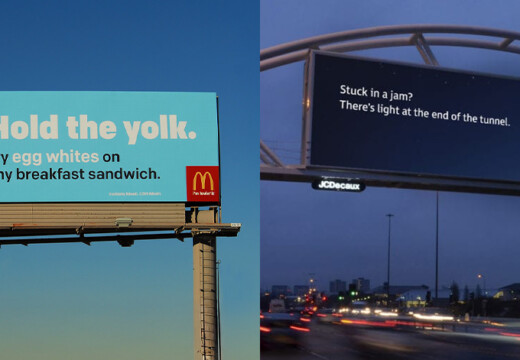Analyzing local demographics is the key to creating billboard campaigns that grab attention and drive results. Here’s how you can make the most of your advertising efforts:
- Pick the right location: Use data like traffic counts, commute patterns, and population density to find high-visibility spots.
- Customize your message: Tailor your ad’s tone, style, and visuals based on age, income, and cultural preferences.
- Use data tools: Platforms like the U.S. Census Bureau’s ACS and Blip’s analytics help you gather insights on local habits and traffic trends.
- Design for impact: Keep text short, use bold colors, and adjust for local conditions like weather or lighting.
- Track success: Measure impressions, store visits, and sales to see how well your campaign performs.
How to analyze foot traffic and demographics in PH billboards?
Core Demographic Metrics to Track
Creating effective billboard ads starts with understanding three key demographic layers: audience traits, traffic patterns, and local community characteristics.
Age, Income, and Daily Habits
To make your billboard messaging effective, focus on factors like age, income, and daily routines:
- Median household income influences spending habits and product appeal.
- Age group concentrations help determine the tone and style of your message.
- Commute patterns reveal the best times and locations to capture attention.
For example, working professionals aged 25–45 are more likely to engage with solution-oriented messages during rush hour. On the other hand, areas with a high number of families may benefit from child-friendly ads placed near schools or shopping hubs.
Next, dive into traffic data to pinpoint high-exposure spots.
Population and Traffic Analysis
Traffic data is essential for refining billboard placement. Key metrics include:
- Daily vehicle counts (DVC) to estimate exposure.
- Peak traffic hours and seasonal variations to time your ad effectively.
- Population density within a 5-mile radius for localized targeting.
- Neighborhood growth trends to identify emerging opportunities.
By combining these insights, you can select locations that maximize visibility for your target audience, balancing residential and commercial traffic.
Local Community Makeup
The makeup of the local community heavily influences how your message will land. Consider factors like:
- Education levels to adjust complexity and tone.
- Primary languages spoken to ensure accessibility.
- Major employers and industries to align with local workforces.
- Cultural events and gatherings to tap into community interests.
- Local businesses to connect with existing consumer habits.
For instance, in areas with a large number of healthcare workers, ads for professional services timed around shift changes can be particularly effective.
To stay on top of changes, review these metrics quarterly and adapt your strategy as needed. Regular updates help ensure your billboard campaigns remain relevant and impactful.
Data Collection Tools and Methods
Census and Public Records
The American Community Survey (ACS) by the U.S. Census Bureau provides detailed demographic data. Key tools include:
- American FactFinder: Access reports on population, housing, and economic trends.
- Census Business Builder: Map local business patterns and consumer spending.
- OnTheMap: Analyze workforce details and commuting trends.
Local government databases can also be valuable, offering zoning maps, property records, and regional economic reports. Pairing these with digital analytics platforms allows you to refine insights for real-time campaign planning.
Billboard Analytics Platforms
Digital tools are essential for effective billboard planning. Platforms like Blip provide key metrics such as:
- Real-time impression tracking
- Location-specific CPM rates
- Audience reach analysis
- Performance monitoring
“Billboards are one of the most impactful ways to advertise, and with Blip, you spend a fraction of what you would end up paying elsewhere.”
These metrics help you dive deeper into audience movement and refine your strategy.
Mobile Traffic Patterns
Mobile data is a powerful tool for understanding movement patterns and choosing the best billboard locations. Focus on:
Peak Hours
- Morning commute: 6:00 AM – 9:00 AM
- Lunch hour: 11:30 AM – 1:30 PM
- Evening rush: 4:00 PM – 7:00 PM
Area Insights
- Heat maps showing device concentrations
- Movement patterns, including dwell time and frequent routes
- Seasonal changes in traffic flow
Combining these data points gives a clearer picture of your local audience.
“Blip works for us. It’s a different medium, and it brings a lot of exposure. That’s what I like.”
Other useful metrics include:
- Hourly vehicle counts
- Average speeds in billboard areas
- Recurring traffic trends
- Impact of special events on traffic flow
sbb-itb-2e2e93f
Matching Billboard Design to Local Audiences
Message Targeting Tips
Once you’ve analyzed your audience, crafting billboard messages that resonate starts with understanding the local context. Studies show that using regional dialects can boost message relevance by 37%.
Income-Based Messaging
Tailor your language to fit the area’s income level. For higher-income neighborhoods (households earning over $150,000), focus on highlighting premium value with polished language. In middle-income areas (incomes between $50,000 and $100,000), emphasize affordability and practicality.
Age-Specific Communication
Age plays a big role in how your message is received. For instance, a Phoenix campaign found that billboards featuring large portrait photos were 22% more memorable for older viewers than abstract designs.
Cultural Connection
Reflecting local culture can make your message more relatable. A Cincinnati campaign swapped generic sports imagery for visuals of the city’s iconic chili parlor architecture. This approach resonated deeply with the community while steering clear of cultural clichés.
Once your message is set, align your design elements to reinforce its impact.
Visual Design Standards
Effective billboard visibility depends on both message clarity and local conditions. Follow these design guidelines to maximize impact:
Text Specifications
- In areas where over 25% of residents are 65 or older, use at least 24-inch tall letters and limit text to 5–7 words to ensure readability within 3 seconds.
- Opt for high-contrast color combinations (at least 80% contrast) to improve legibility.
Color Selection
Colors can influence engagement based on regional preferences:
- Coastal regions: Cool tones like blue and green can evoke trust.
- Midwest areas: Warm tones like red and yellow convey energy.
- Hispanic-majority neighborhoods: Vibrant, multicolored designs have been shown to increase engagement by 41%.
Environmental Considerations
Adapt your design to the local environment:
- In northern states, brighter displays (500+ nits) improve visibility during winter.
- In sunny southwestern areas, anti-glare matte finishes reduce reflections and improve readability.
A great example is Toyota‘s 2023 Hispanic Heritage Month campaign in Phoenix. Their billboards featured bilingual text with 48-inch tall letters, visuals of multigenerational Latino families, and strategic placement in areas with high Hispanic foot traffic. This approach led to a 31% increase in dealership visits from Latino households compared to English-only ads.
Testing your designs with local feedback can also pay off. In Miami, a restaurant chain avoided criticism by replacing generic beach imagery with specific photos of Virginia Key Beach, which resulted in stronger community support.
Measuring Local Campaign Results
Measuring how well your billboard campaigns perform is key to improving them. Building on earlier insights about demographics and traffic, let’s dive into how to assess their impact effectively.
View Count Analysis
Understanding how many people see your billboard and when is crucial. Modern digital tools make it easier to measure visibility across different groups.
Daily Impression Tracking
Use analytics tools to monitor:
- Traffic volumes and patterns
- Peak times when your billboard gets the most attention
- Breakdown of viewers by demographics
- Average daily impressions
- How long people stay in view of your billboard
Demographic Response Rates
Learn how different audience segments interact with your billboard by tracking:
- Patterns based on specific times of day
- Presence of mobile devices in the area
- Changes in traffic flow
These numbers give you a clearer picture of your billboard’s reach and set the stage for connecting visibility to business outcomes.
Sales Impact Tracking
The ultimate goal is to turn those impressions into measurable sales data. Here’s how to connect the dots between your billboard and your bottom line.
“It’s not a social media thing that you see on your phone. It’s not word-of-mouth. It’s big and bold and out there in public. I would say this is the first step of looking big and public.”
- Chris Leslie, Founder, Leslie Lightcraft Co
Key Performance Indicators
| Metric Type | What to Measure | How to Track |
|---|---|---|
| Direct Response | Store visits | Foot traffic counters |
| Brand Awareness | Local search volume | Google Analytics data |
| Sales Impact | Transaction increases | POS system analysis |
| Geographic Reach | Customer zip codes | Sales data analysis |
Correlation Analysis
Tie billboard exposure to business results by:
- Comparing sales data before and after the campaign
- Studying changes in store visit patterns
- Tracking website traffic originating from areas where the billboard is visible
Local Business Impact
Gauge success by examining:
- Feedback from customers through surveys or social media
- Increases in local brand recognition
- Website traffic specifically from your targeted areas
Conclusion: Using Demographics for Better Billboards
Demographic analysis transforms broad advertising into focused, effective marketing. By tapping into data-driven insights, businesses can create billboard campaigns that truly connect with their audience and deliver measurable outcomes.
Here’s how targeted strategies improve campaign results:
- Timing ads strategically based on local traffic patterns
- Crafting messages that resonate with the community
- Tracking performance to refine future efforts
- Allocating budgets based on audience engagement
Platforms like Blip make demographic targeting more accessible than ever. As Ray Bowens, Founder of Hashtag-Vape, points out:
“Billboards are one of the most impactful ways to advertise, and with Blip, you spend a fraction of what you would end up paying elsewhere”
From choosing the right location to designing messages that resonate, demographic insights shape every step of a successful campaign. For small businesses, this approach ensures smarter spending, stronger local connections, and measurable growth. By using these insights, businesses can create billboard ads that stand out and drive real results.
FAQs
How can I use demographic data to create billboard messages that resonate with different age groups?
To craft impactful billboard messages for different age groups, start by analyzing local demographic data to understand the preferences, behaviors, and interests of your target audience. Focus on key factors like age distribution, income levels, and lifestyle trends in the area where your billboard will be displayed.
Tailor your message and design to appeal to the specific age group you’re targeting. For example, bold, modern visuals and concise messaging may work well for younger audiences, while older demographics might respond better to clear, straightforward text and classic design elements. Use tools that provide insights into traffic patterns and audience impressions to ensure your billboard reaches the right people at the right time.
Platforms like digital billboards can help you test and adjust your campaigns quickly, allowing you to refine your strategy based on performance data and audience response.
How can I analyze local demographics and traffic patterns to choose the best locations for billboard ads?
To effectively analyze local demographics and traffic patterns for billboard placement, start by identifying your target audience. Look at factors such as age, income, interests, and commuting habits. Access publicly available data from sources like the U.S. Census Bureau or local government websites to gather relevant demographic insights. Additionally, tools like traffic count reports or GPS-based analytics can help pinpoint high-traffic areas and peak travel times.
For a more streamlined approach, platforms like Blip provide detailed metrics such as impressions and CPM for specific billboard locations. This allows you to evaluate potential placements based on real-time data and optimize your campaign for maximum visibility. By combining demographic research with traffic analysis, you can ensure your billboard ads reach the right audience in the most effective locations.
How can I evaluate the success of my billboard campaign in driving sales and building brand awareness?
To evaluate the success of your billboard campaign, focus on two key areas: sales impact and brand awareness. Start by tracking measurable metrics like website traffic, online sales, or in-store visits during and after your campaign. Compare these results to your baseline data to identify any significant increases.
For brand awareness, monitor engagement metrics such as social media mentions, search engine activity for your brand, or customer feedback. Blip’s analytics tools can help you assess campaign performance by providing insights like impressions and cost-per-thousand views, ensuring your efforts align with your goals.
Related posts
To craft impactful billboard messages for different age groups, start by analyzing local demographic data to understand the preferences, behaviors, and interests of your target audience. Focus on key factors like age distribution, income levels, and lifestyle trends in the area where your billboard will be displayed.
\n
Tailor your message and design to appeal to the specific age group you’re targeting. For example, bold, modern visuals and concise messaging may work well for younger audiences, while older demographics might respond better to clear, straightforward text and classic design elements. Use tools that provide insights into traffic patterns and audience impressions to ensure your billboard reaches the right people at the right time.
\n
Platforms like digital billboards can help you test and adjust your campaigns quickly, allowing you to refine your strategy based on performance data and audience response.
"}},{"@type":"Question","name":"How can I analyze local demographics and traffic patterns to choose the best locations for billboard ads?","acceptedAnswer":{"@type":"Answer","text":"
To effectively analyze local demographics and traffic patterns for billboard placement, start by identifying your target audience. Look at factors such as age, income, interests, and commuting habits. Access publicly available data from sources like the U.S. Census Bureau or local government websites to gather relevant demographic insights. Additionally, tools like traffic count reports or GPS-based analytics can help pinpoint high-traffic areas and peak travel times.
\n
For a more streamlined approach, platforms like Blip provide detailed metrics such as impressions and CPM for specific billboard locations. This allows you to evaluate potential placements based on real-time data and optimize your campaign for maximum visibility. By combining demographic research with traffic analysis, you can ensure your billboard ads reach the right audience in the most effective locations.
"}},{"@type":"Question","name":"How can I evaluate the success of my billboard campaign in driving sales and building brand awareness?","acceptedAnswer":{"@type":"Answer","text":"
To evaluate the success of your billboard campaign, focus on two key areas: sales impact and brand awareness. Start by tracking measurable metrics like website traffic, online sales, or in-store visits during and after your campaign. Compare these results to your baseline data to identify any significant increases.
\n
For brand awareness, monitor engagement metrics such as social media mentions, search engine activity for your brand, or customer feedback. Blip’s analytics tools can help you assess campaign performance by providing insights like impressions and cost-per-thousand views, ensuring your efforts align with your goals.
"}}]}


